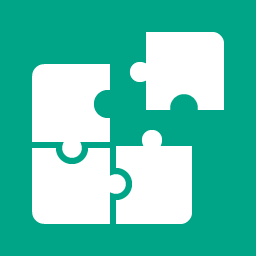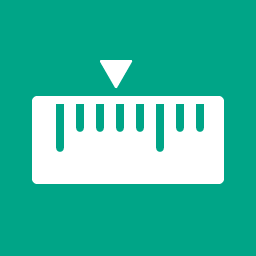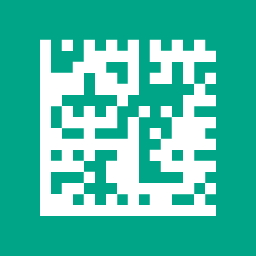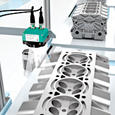
Multifunctional.
Modular.
Identifies, positions and measures―with 5 megapixels and at the same time
VOS—2-D Universal Vision Sensor
The comprehensive integrated vision tool set of the VOS devices can be flexibly combined so that the most diverse automation tasks in the 2-D vision field can be solved with just one sensor. Due to the individual configuration options and evaluation methods, the universally applicable 2-D vision sensors of the VOS series can be integrated into numerous applications that usually require a complex vision system—with no need for additional software:
- Positioning and guiding of objects
- Detection and matching of features
- Optical gauging
- Text recognition (OCR)
- Reading of 1-D and 2-D codes
The camera-based vision sensors combine an image capture chip, adjustable lenses, system lighting, integrated evaluation, digital outputs, and communication interfaces in a compact housing. Whether in machine and plant construction, conveyor technology or the packaging industry— the powerful VOS sensors consistently deliver fast and reliable measurement results and enable precise quality control and inspection.
Learn more about your setup options—and configure a vision sensor that perfectly suits your specific application!
Applications and Areas of Use
With their versatility and flexibility in use, the VOS 2-D universal vision sensors master numerous identification and inspection tasks in the field of industrial vision:

Two-dimensional area image evaluation

Check for the presence of objects

Check for correct number of objects

Shape matching with reference profile or contour

Classification of objects and environments according to color classes and color schemes

Position check of objects and output of position data

Monitoring of areas

Dimensioning of objects and output of measurement data

Reading of all common 1-D and 2-D codes as well as a variety of common code symbologies

Conversion of printed text into machine-readable characters

Combination of multiple vision tools to perform different tasks simultaneously
Benefits

Modular Camera Portfolio

Vision Tool Evaluation Built into the Sensor
Graphical User Interface

For particularly challenging tasks, the VOS2000 and VOS5000 sensors are suitable as C-mount variants. System lighting can be connected via a pulse output and the sensor can be equipped with the appropriate lens. Therefore, the vision sensors master measurement tasks with demanding lighting scenarios and larger distances while offering even higher accuracy.
Modularity and Flexibility
They are flexible and modular—the VOS 2-D universal vision series offers a complete portfolio consisting of sensor, lens, system lighting, and protective cover, which can be flexibly combined depending on your application requirements. Learn more about the different models and how you can combine the components to fit your individual vision task.
Flexible Connection to Control System and PC

The devices of the VOS series have freely programmable, optically decoupled signal outputs for easy signaling of pass/fail measurement results of a job. The freely parameterizable signal inputs, can be used as a trigger or for job switching.
In addition, specific control commands such as job switching, teach-in or trigger commands can be sent to the camera via all common Ethernet-based interfaces, such as TCP/IP, PROFINET and EtherNet/IP. Detailed measurement data can then be transferred to your controller or PC. The format of the data output can be individually adapted to the system.
Software and Interfaces
Integrated Tool-Set for Demanding 2-D Vision Tasks

The integrated license-free software of the VOS series includes a comprehensive vision tool set for setting up and qualifying vision applications. This tool set enables graphical parameterization based on a reference image. The tools available in the camera software for different applications can be selected and combined to create one or different measurement tasks. The sensor can dynamically switch between up to 32 jobs. Due to the intuitive user interface, sensor replacement, commissioning and job management can be performed quickly and easily.
In addition to the parameterization monitor, an application monitor is available that displays both the situation image and the measurement result—also via remote access. Processes can be monitored remotely in real time or looked up via the history. The camera buffers process and error images or transfers them automatically.
Vision Tools
Positioning and Guidance

In automotive production, wheels are usually mounted on vehicles fully automatically. A robot gripper mounts the different types of rims on the wheel hubs. In this application, the VOS vision sensor determines the exact position of the rim in relation to the wheel hub. A preinstalled vision tool reports to the robot the orientation and position of the rim bolt circle in a 2-D plane. New rim types can be learned via teach-in.
Detection and Matching

In filling plants, bottles are automatically filled, labeled, and capped. Errors such as misaligned labels or crooked caps can occur in the process. The affected bottles have to be sorted out and removed at very high movement speeds. For these cases, the VOS vision sensor offers a vision tool that guarantees seamless quality control at a high measuring rate: The sensor simultaneously checks the position of the label and the cap. The sensor’s global shutter principle ensures a distortion-free image. In addition, a hardware trigger such as a light barrier enables precise time control of the image capture.
Identification and Text Recognition (OCR)

In the automotive industry, codes and direct part marking enable quality control and complete traceability of safety-relevant components. On metal surfaces, lighting can cause strong reflections. Additional light sources and fluctuating ambient light can negatively affect measurement results. Therefore, special vision tools of the VOS 2-D universal vision sensors ensure that markings with different fonts and code symbologies are reliably detected and read out. With their comprehensive range of lighting, the sensors reliably read directly marked codes—even in difficult conditions and at larger measurement distances.
Optical Gauging

During the final inspection of high-quality or safety-critical components, small deviations can lead to vibrations, damage, or dangerous situations. With the VOS vision tool for optical gauging, circle diameters, linear dimensions, and complex shapes are measured. The values can either be sent to the higher-level control system or used directly as a pass/fail switching signal. Length units are automatically converted to a metric length value following a calibration on the 2-D plane. Moreover, a calibration checkerboard enables precise correction of the lens distortion.
Products
Application Examples

In battery production, the individual modules are gripped by robots and placed into battery packs. To do this, the robot must know exactly where to reach. The VOS 2-D universal vision sensor uses a stored vision tool to calculate the exact position of the modules and then passes the data on to the robot. The flexibly formatted data output enables simple connection to the robot controller. This allows the robot arm to grip the battery modules precisely.

To ensure maximum transparency and quality control, the VOS 2-D universal vision sensor checks labels for complete printing. The camera automatically reads the content of a two-dimensional Data Matrix code, verifies it and compares it with the actual print using a text reading tool (OCR). The measurement result and the image data for documentation are available to a higher-level control system.
Pepperl+Fuchs Hacks: Commissioning and Setup of Test Jobs with the VOS2000
As part of production, you usually have to solve various inspection tasks. For example, you want to know where your product is on the conveyor belt or would like to read the barcode. Until now, users had to use different sensors for this. With the VOS2000 2-D vision sensor, various inspection tasks can be solved with just one device. Watch the video to find out how to put the VOS2000 into operation and set up different inspection jobs.
Challenge Us!
Are you looking for an image processing solution with the VOS 2-D universal vision sensor? Together with our integration partners we design your individual machine vision solution. We look forward to hearing from you!







 More Information
More Information

 +44 161 6336431
+44 161 6336431